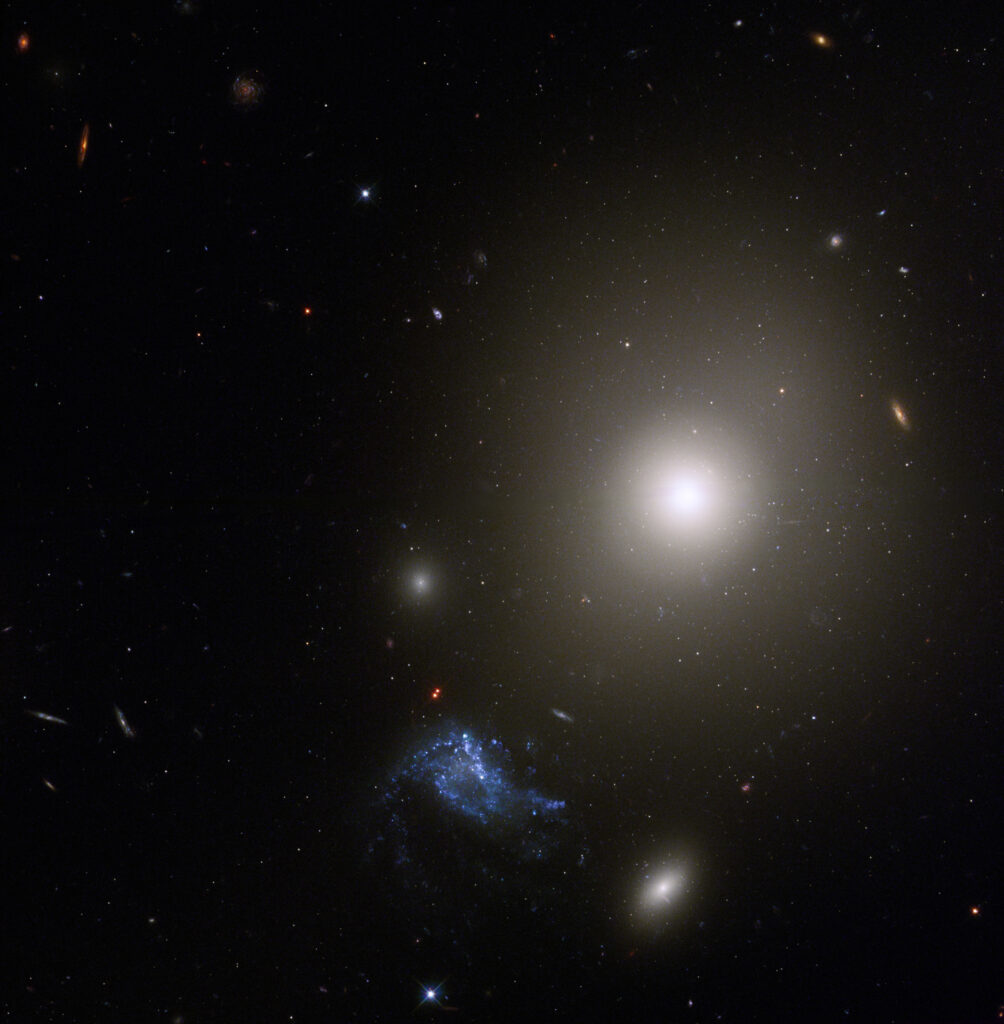The Hubble mission support group has published a photo where you can see a rather unusual pair of deep space objects. The elliptical galaxy NGC 541 is captured in the upper right part of the image. Such objects have a spherical or ellipsoid shape and are characterized by the complete absence of any traces of spiral structures. Usually they do not have reserves of dust and gas that allow them to form new luminaries, so they are mostly inhabited by old stars.

The blue structure at the low part of the image represents an irregular galaxy with a flash of formation, known by the designation “Minkowski’s Object”. The galaxy is extremely young. Its age is only 7.5 million years old and it is inhabited by newly formed luminaries, as indicated by its characteristic color. According to the latest estimates, in total, the “Minkowski’s Object” consists of 20 million stars.
But how exactly was the “Minkowski’s Object” formed? According to astronomers, a supermassive black hole located in the center of its neighbor is to blame for this. NGC 541 is a radio galaxy. Two jets emanate from it, which actively emit in the radio range. Their source is an accretion disk around a supermassive black hole at the center of NGC 541.
Galaxies like NGC 541 are quite often surrounded by vast gas halos. They may remain after the absorption of other galaxies, which in turn can explain the increased activity of the black hole. The jets formed by it crash into clouds of gas. The shock wave compresses and heats (ionizes) the gas. When the compressed gas again passes from a high-energy state to a low-energy one, the energy leaves the cloud in the form of radiation. Then it cools down and collapses, which starts the process of star formation. Thus, the “Minkowski’s Object” can literally be called a “child” of a black hole.
Recall that black holes do not always contribute to the formation of new stars. Often, on the contrary, they hinder the processes of star formation and deprive their native galaxies of the reserves of the necessary “building material” for them.
According to https://www.nasa.gov
Follow us on Twitter to get the most interesting space news in time
https://twitter.com/ust_magazine

